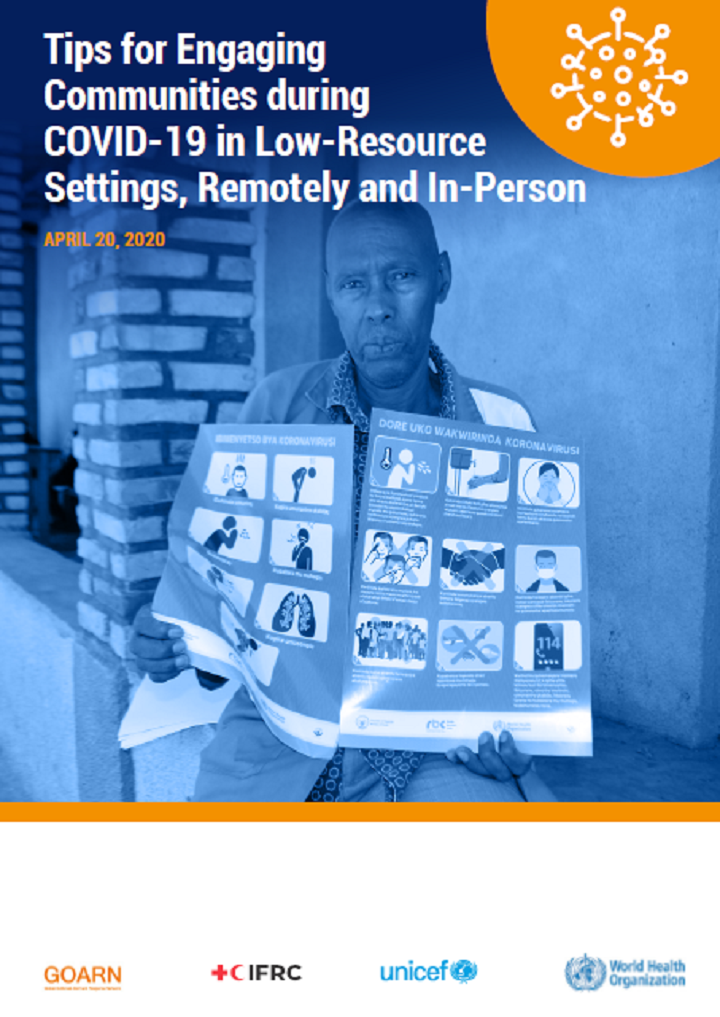Tips for Engaging Communities during COVID-19 in Low-Resource Settings, Remotely and In-Person
GOARN, IFRC, UNICEF, WHO (2020)

Published in: 2020
Pages: 31
Publisher:
GOARN, IFRC, UNICEF, WHO
Author:
GOARN, IFRC, UNICEF, WHO
Uploaded by:
SuSanA Admin
Partner profile:
common upload
743 Views
6 Downloads
This brief provides key considerations for engaging communities on COVID-19 and tips for how to engage where there are movement restrictions and physical distancing measures in place, particularly in low-resource settings. It is designed for non-governmental organizations (NGOs), UN agencies, government agencies, and other humanitarian and implementing actors working on health promotion, risk communication, and community engagement for COVID-19. This document is an initiative of the GOARN Risk Communication and Community Engagement (RCCE) Coordination Working Group co-led by UNICEF, the International Federation of the Red Cross (IFRC), and the World Health Organization (WHO). It was developed jointly by the READY initiative [funded by USAID’s Office of Foreign Disaster Assistance (OFDA)], Johns Hopkins Center for Communication Programs (CCP), Save the Children, UNICEF, UNICEF’s Social Science Analysis Cell (CASS), IFRC, WHO, CORE Group, Social Science in Humanitarian Action (SSHAP), Anthrologica, United National High Commissioner for Refugees (UNHCR), CARE International, Internews, DAI, Community Health Impact Coalition, BBC Media Action, Emergency Telecommunications Cluster (ETC), World Food Programme, and Catholic Relief Services, with additional input from public health consultant Sanchika Gupta. This document will be updated periodically as new guidance and practices are developed.
Bibliographic information
GOARN, IFRC, UNICEF, WHO (2020). Tips for Engaging Communities during COVID-19 in Low-Resource Settings, Remotely and In-Person. GOARN, IFRC, UNICEF, WHO
Filter tags
English Guidelines and manuals














